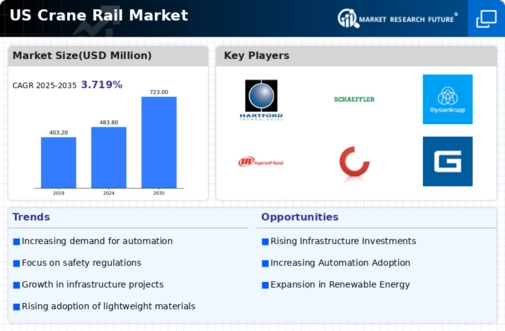The US Crane Rail Market represents a crucial sector within the larger construction and infrastructure industry, characterized by various key players that compete vigorously to secure market share. The dynamics of this market are shaped by technological advancements, regulatory standards, and fluctuating demand in construction and transportation sectors. In this competitive landscape, companies are continuously innovating and improving their product offerings to meet the rising expectations of consumers while navigating supply chain challenges.
The presence of both established manufacturers and emerging players adds to the competitive intensity, necessitating a keen strategic focus on areas such as pricing, delivery logistics, and after-sales services to create a significant market presence and maintain customer loyalty.Tadano Ltd has carved out a substantial niche in the US Crane Rail Market, driven by its commitment to quality and innovation. The company is recognized for its reliable and efficient crane solutions, which contribute to its solid reputation. The strength of Tadano Ltd lies in its comprehensive range of products, meeting diverse customer needs across various sectors.
With a focus on enhancing operational efficiency and reducing environmental impact, the company has introduced advanced technologies in its machinery. Additionally, Tadano Ltd benefits from a strong distribution network and established relationships with key stakeholders, positioning itself well for growth in the competitive US market landscape.American Crane and Equipment Corporation maintains a robust presence in the US Crane Rail Market, providing an extensive lineup of products and services that cater to the needs of numerous industries. The company specializes in manufacturing a range of cranes and lifting equipment, affirming its reputation as a versatile provider within the sector.
Their strengths lie in the customization capabilities of their products, allowing them to meet specific client requirements effectively. Furthermore, American Crane and Equipment Corporation has ventured into strategic partnerships and acquisitions to bolster its market presence and expand its product offerings. This dedication to innovation, combined with strong customer support services, helps to reinforce its competitive position within the US market as a trusted supplier of crane rail solutions.
















